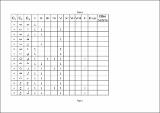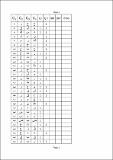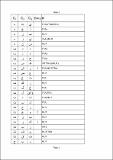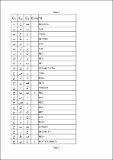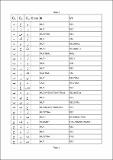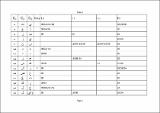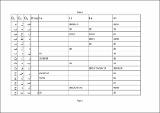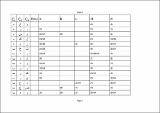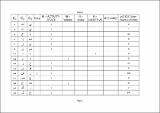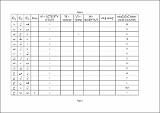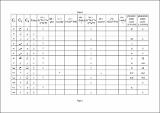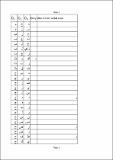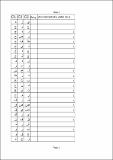Files in this item
The Arabic verb : form and meaning in the vowel-lengthening patterns
Item metadata
| dc.contributor.advisor | Beedham, Christopher | |
| dc.contributor.advisor | Cobham, Catherine | |
| dc.contributor.author | Danks, Warwick | |
| dc.coverage.spatial | 437 p. | en_US |
| dc.date.accessioned | 2010-07-05T11:04:20Z | |
| dc.date.available | 2010-07-05T11:04:20Z | |
| dc.date.issued | 2010-06-24 | |
| dc.identifier | uk.bl.ethos.552378 | |
| dc.identifier.uri | https://hdl.handle.net/10023/961 | |
| dc.description | Also published: Amsterdam : John Benjamins, 2011 (http://dx.doi.org/10.1075/sfsl.63) | en_US |
| dc.description.abstract | The research presented in this dissertation adopts an empirical Saussurean structuralist approach to elucidating the true meaning of the verb patterns characterised formally by vowel lengthening in Modern Standard Arabic (MSA). The verbal system as a whole is examined in order to place the patterns of interest (III and VI) in context, the complexities of Arabic verbal morphology are explored and the challenges revealed by previous attempts to draw links between form and meaning are presented. An exhaustive dictionary survey is employed to provide quantifiable data to empirically test the largely accepted view that the vowel lengthening patterns have mutual/reciprocal meaning. Finding the traditional explanation inadequate and prone to too many exceptions, alternative commonalities of meaning are similarly investigated. Whilst confirming the detransitivising function of the ta- prefix which derives pattern VI from pattern III, analysis of valency data also precludes transitivity as a viable explanation for pattern III meaning compared with the base form. Examination of formally similar morphology in certain nouns leads to the intuitive possibility that vowel lengthening has aspectual meaning. A model of linguistic aspect is investigated for its applicability to MSA and used to isolate the aspectual feature common to the majority of pattern III and pattern VI verbs, which is determined to be atelicity. A set of verbs which appear to be exceptional in that they are not attributable to atelic aspectual categories is found to be characterised by inceptive meaning and a three-phase model of event time structure is developed to include an inceptive verbal category, demonstrating that these verbs too are atelic. Thus the form-meaning relationship which is discovered is that the vowel lengthening verbal patterns in Modern Standard Arabic have atelic aspectual meaning. | en_US |
| dc.language.iso | en | en_US |
| dc.relation | Olsen, Mari Broman. 1997. A semantic and pragmatic model of lexical and grammatical aspect. New York: Garland. | en_US |
| dc.relation | Beedham, Christopher. 2005. Language and meaning: The structural creation of reality. Amsterdam: John Benjamins. | en_US |
| dc.subject | Morphology | en_US |
| dc.subject | Semantics | en_US |
| dc.subject | Aspect | en_US |
| dc.subject | Transitivity | en_US |
| dc.subject | Mutuality | en_US |
| dc.subject | Reciprocity | en_US |
| dc.subject | Valency | en_US |
| dc.subject | Modern Standard Arabic | en_US |
| dc.subject | Syntax | en_US |
| dc.subject | Lexical exceptions | en_US |
| dc.subject | Saussure | en_US |
| dc.subject | Descriptive linguistics | en_US |
| dc.subject | Structuralism | en_US |
| dc.subject | Pattern III | en_US |
| dc.subject | Pattern VI | en_US |
| dc.subject | Atelicity | en_US |
| dc.subject.lcc | PJ6145.D2 | |
| dc.subject.lcsh | Arabic language--Verb | en_US |
| dc.subject.lcsh | Arabic language--Morphology | en_US |
| dc.subject.lcsh | Arabic language--Semantics | en_US |
| dc.subject.lcsh | Arabic language--Aspect | en_US |
| dc.subject.lcsh | Arabic language--Transitivity | en_US |
| dc.title | The Arabic verb : form and meaning in the vowel-lengthening patterns | en_US |
| dc.type | Thesis | en_US |
| dc.type.qualificationlevel | Doctoral | en_US |
| dc.type.qualificationname | PhD Doctor of Philosophy | en_US |
| dc.publisher.institution | The University of St Andrews | en_US |
| dc.identifier.doi | https://doi.org/http://dx.doi.org/10.1075/sfsl.63 |
This item appears in the following Collection(s)
Items in the St Andrews Research Repository are protected by copyright, with all rights reserved, unless otherwise indicated.


